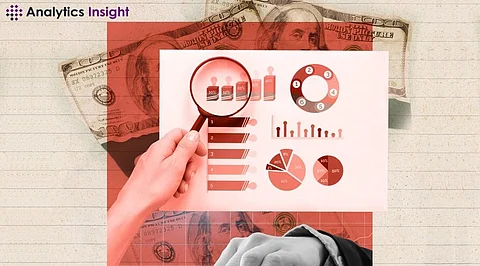

In the rapidly evolving landscape of data analytics, effective visualization is key to unlocking insights and making informed decisions. Creating a dashboard for data analytics projects is a crucial step toward transforming raw data into actionable information. In this comprehensive guide, we'll walk you through the essential steps to create a powerful and user-friendly dashboard for a data analytics project that empowers your data-driven decision-making.
Before diving into the technical aspects of dashboard creation, it's vital to clearly define your project objectives and identify your target audience. Understanding the goals of your data analytics project will guide the selection of key performance indicators (KPIs) and metrics that should be highlighted on the dashboard. Knowing your audience ensures that the dashboard design aligns with their needs and preferences, making it more user-friendly and effective.
Selecting the right data visualization tools is a critical decision that significantly influences the success of your dashboard. Consider factors such as the type of data you are working with, the complexity of your analytics, and the technical skills of your team. Popular tools like Tableau, Power BI, and Google Data Studio offer a range of features and customization options to suit different project requirements. Evaluate these tools based on your specific needs to make an informed decision.
Data is the foundation of any analytics project, and a well-constructed dashboard relies on clean, accurate, and relevant data. Begin by gathering all necessary data sources and ensure they are compatible with your chosen visualization tool. Conduct data cleaning and transformation processes to address inconsistencies, missing values, and outliers. The quality of your dashboard is directly tied to the quality of the data it represents, so invest time in preparing your data meticulously.
A visually appealing and intuitive layout is crucial for user engagement. Start by organizing your dashboard with a clear hierarchy, placing the most important information prominently. Use a consistent color scheme and font to enhance readability, and avoid clutter by prioritizing relevant data. Group related visualizations together to create a logical flow of information. Remember that simplicity is key – an overly complex dashboard can overwhelm users and diminish its effectiveness.
Selecting the right data visualizations is essential for conveying insights effectively. Different types of visualizations suit different types of data and goals. For example, use line charts for trends over time, bar charts for comparisons, and pie charts for proportion analysis. Leverage interactive elements such as filters and drill-down options to allow users to explore the data at a granular level. Strive for a balance between simplicity and depth to cater to a broad audience.
In today's fast-paced business environment, real-time data is often crucial for making timely decisions. Depending on your project requirements, consider implementing real-time updates in your dashboard. Tools like Tableau and Power BI offer features that allow data to be refreshed at specified intervals or triggered by specific events. Real-time updates ensure that decision-makers have access to the most current information, enhancing the relevance and impact of your dashboard.
With the increasing reliance on mobile devices, it's essential to design dashboards that are responsive and accessible on various screen sizes. Check the mobile responsiveness of your dashboard to guarantee a seamless user experience across different devices. This ensures that stakeholders can access critical information on the go, fostering a more agile and responsive decision-making process.
Protecting sensitive data should be a top priority when creating a dashboard for your data analytics project. Implement security measures such as user authentication, role-based access control, and encryption to safeguard your data. Restrict access to specific dashboards or features based on user roles to ensure that confidential information is only accessible to authorized personnel. Regularly update and monitor security protocols to stay ahead of potential threats.
Before deploying your dashboard to a wider audience, conduct thorough user testing with a small group of stakeholders. Gather feedback on the usability, clarity, and functionality of the dashboard. Use this input to make the required changes and modifications. Iterative testing ensures that the final dashboard meets the needs of your audience and maximizes its impact on decision-making processes.
Even the most user-friendly dashboards may require some training for users to fully utilize their potential. Provide training sessions to familiarize stakeholders with the dashboard's features and functionalities. Additionally, establish a support system to address any issues or questions that may arise during regular use. A well-supported dashboard encourages user adoption and ensures that stakeholders feel confident in leveraging the tool for data-driven decision-making.
Creating a dashboard for your data analytics project is a multifaceted process that requires careful planning, thoughtful design, and ongoing maintenance.
Join our WhatsApp Channel to get the latest news, exclusives and videos on WhatsApp
_____________
Disclaimer: Analytics Insight does not provide financial advice or guidance. Also note that the cryptocurrencies mentioned/listed on the website could potentially be scams, i.e. designed to induce you to invest financial resources that may be lost forever and not be recoverable once investments are made. You are responsible for conducting your own research (DYOR) before making any investments. Read more here.
